Goth is an extremely complicated subculture and “genre”. Many heated debates have been had among friends as to which bands qualify, where is the line between post-punk, goth, and industrial lies, and whether or not a working-class band from the heart of Manchester deserve credit as the kingpins to an entire culture (hint, we’re going with the Northampton boys and “Bela“).
Before we get started, a few ground rules: This is not intended as a rigid history lesson, intended to take you on an all-encompassing journey through gothic subculture past, present, and future. This list is not necessarily a perfect starter kit either, though you could certainly do much worse than listen to each of the records listed ad-nauseum (please be careful if you’ve found yourself here and don’t have the emotional fortitude for this kind of undertaking). Instead, our list selects many of our favorite classic records that were released during goth’s initial gestation, explosion, and eventual decline from the mainstream consciousness. Our intent is to both celebrate the records we all know and love like the back of our hands, while simultaneously shedding light on some lesser-known, but equally essential records that fall within these constraints. This list was made with passion, and we truly love every entry here.
By design, this list also excludes anything released before 1980 and after the mid-90s. It pains us greatly to neglect the dystopian “We Are the Dead,” the maddening “Frankie Teardrop,” the fiery “Janitor of Lunacy,” or even a string of quintessential Shangri-Las singles. We also hate to exclude dozens and dozens of incredible modern records made by our friends and peers. Certainly, we’re not afraid to cover new bands and will continue to cover new and exciting music as long as it exists. Perhaps we’ll explore all of this in future lists…
As goth music’s definition and categorization often lies in the ears of the beholder, we’ve also attempted to cover as much ground as possible within our self-imposed constraints, exploring the myriad of genres that encapsulate and goth. Maybe we’ll piss some people off with these choices, or for neglecting your all-time favorite record. We fully expect (and welcome) a handful of “how dare you’s” in the comment section. We’re all eyes!
Without any further ado, let’s get to it—here is the list in chronological order:
1. Joy Division- Closer (Factory, 1980)
Released two months after the suicide of lead singer Ian Curtis, Closer is a far more somber affair than the explosive Unknown Pleasures. After avoiding them for much of their career, the band began to incorporate synthesizers, highlighted on tracks such as “Isolation,” and “Heart and Soul.” The record also features a much darker shade of production from Factory mainstay Martin Hannett, cementing its place as the first gothic masterpiece.
“we’ve got a tomb on the cover of the album!”-Peter Saville
The cover artwork, designed by both Martyn Atkins and Peter Saville, features a photograph taken by Bernard Pierre Wolff. The image depicts Jesus and Mary from the Appiani family tomb in the Cimitero Monumentale di Staglieno in Genoa, Italy.
2. Bauhaus- Mask (Beggars Banquet, 1981)
Just a few years into their career, Bauhaus channeled their love of Bowie and Bolan into a string of incendiary singles and landmark LP In the Flat Field. Their sophomore record Mask is arguably their definitive work and the band’s most cohesive, collaborative effort. Album singles “Kick in The Eye” and “The Passion of Lovers” expanded the band’s sonic repertoire through dub rhythms, saxophones, and generous use of keyboards and acoustic guitars, respectfully. These sonic touchstones would remain staples of each band member’s career.
Daniel Ash also designed the album’s unique cover art, a precursor to his work as Bubbleman Designs. Ash would also provide artwork for the third and fourth Bauhaus LPs, as well as art for follow up projects Tones on Tail and Love and Rockets.
The video for the Mask‘s title track was filmed in an abandoned Victorian shoe factory in Northampton, seemingly paying homage the Hammer Horror films of the 70s. The band were not authorized to film there, and had to sneak in and out for the production.
3. Siouxsie & the Banshees- Juju (Polydor, 1981)
Juju, the fourth studio album from Siouxsie & the Banshees, is considered by many to the band’s finest work, with very good reason. John McGeoch’s innovative guitar playing is center stage, highlighted on albums tracks “Monitor” and “Into The Light,” as well as two of the band’s most iconic singles: “Spellbound” and “Arabian Knights.”
Juju also contains a song called “Halloween” – Trick or Treat!
Further Listening: Stimmen Der Stille- Morgenstern, Asmodi Bizarr- Sunsierra, Kas Product- Try Out
4. Modern English- Mesh & Lace (4AD, 1981)
Though often unfairly maligned as a one-hit wonder, Modern English’s earliest recordings serve as a sonic blueprint for the goth genre, taking the art-driven sonic template of Wire’s second and third records and pushing it deeper into catharsis. The results are explosive and powerful, and helped to put the budding 4AD on the map. Tracks like “16 Days” and “Move In Light” seethe with infectious, nervous energy, and all those paying attention were inspired to follow suite.
Further Listening: My Captains- History 7”, Mass- Labour of Love
5. The Birthday Party- Prayers On Fire (Missing Link, 1981)
The Birthday Party’s first (proper) LP is chock full of manic, nihilistic fun. After a series of early recordings as The Boys Next Door, the band fully captured their intense and flamboyant live performances on tape, staunchly rebelling against the budding new romantic movement with a record that is as brutal as they come.
The Birthday Party were a true tour de force, featuring the sleazy bass playing of Tracy Pew, the incisive guitar work of Rowland S. Howard, and Mick Harvey’s cacophonous Farfisa organ. These three singular musicians were held together, just barely, by Nick Cave’s madcap barks, croons, and yelps. While Cave (and many of these same musicians), would continue to explore the darkness of the human psyche over a string of records as The Bad Seeds, the story takes root here.
Further Listening: Nick Cave & the Badseeds- From Her to Eternity
6. Virgin Prunes- …If I Die, I Die (Rough Trade, 1982)
To most, the Virgin Prunes tale begins and ends as a curious sidebar to fellow Irish staples U2. Members of both bands grew up together and ran in the same “youthful gang” where each member would obtain a new identity to start life anew. Both bands formed around the same time, sharing a camaraderie during their formative years. While U2 quickly blew up and became much more than their humble post-punk beginnings (for better or for worse, depending on who you ask), the Prunes paved the way for the budding gothic scene with a truly creative, sometimes campy classic that still leaves its black, fishnet-clad mark on the club scene today. This particular masterpiece was produced by Wire’s own Colin Newman, one of the most prominent influences on the genre in his own right.
7. The Cure- Pornography (Fiction Records, 1982)
The recipe is rather simple: combine the insular, minimalist approach of Seventeen Seconds and Faith, push it to the extreme via constant ingestion of psychedelic drugs, stream-of-consciousness writing, and complete isolation, the results turn out to be what very well might be the first truly ‘gothic’ record. Opening track “One Hundred Years” comes out swinging with righteous fury with a pummeling drum machine, distorted strings, thick bass, and dizzying washes of guitar. The album is relentless, and even single “The Hanging Garden” howls with animalistic abandon.
Pornography is The Cure at their bleakest and most impenetrable, so visceral and punishing that the band couldn’t sustain the manic energy before imploding and completely changing the landscape of pop music upon their return.
Further Listening: The Glove- Blue Sunshine, The Essence- Monument of Trust
8. Cocteau Twins- Head Over Heels (4AD, 1983)
Cocteau Twins’ debut record Garlands, though critically (and unfairly) derided as derivative and unremarkable, served as an incredible statement of intent, with washes of guitar, hypnotic bass, and Liz Frasier’s signature vocals sending a feedback loop through the underground. After parting ways with founding bassist Will Heggie and moonlighting as a two-piece, Cocteau Twins recorded their first true masterpiece in Head Over Heels. While a transformative record in scope, opening track “When Mama Was Moth” sets the tone for the sonic journey that follows. The record is often supplemented by the equally incredible Sunburst and Snowblind EP, with more variations on the same syrupy textures.
9. Alien Sex Fiend- Who’s Been Sleeping In My Brain? (Anagram Records, 1983)
Alien Sex Fiend’s debut highlights the Batcave darlings’ fusion of the synth punk horror of Suicide with the shock rock theatrics of Alice Cooper. Produced by Killing Joke’s Martin Glover (aka Youth), the album is an electrifying gothic classic, containing the anthemic “Ignore The Machine.”
10. Death Cult – God’s Zoo 12”/Brothers Grimm 12” (Situation Two, 1983)
Singer Ian Astbury formed a new band after leaving Southern Death Cult, recruiting guitar hero Billy Duffy, who had just done a stint in Theatre of Hate. What resulted from this collaboration was short-lived, but formed the genesis of what would later become The Cult. The Death Cult incarnation of the band is an important work in the annals of gothic rock and positive punk. Both the God’s Zoo single and the Brothers Grimm EP are collected on the Ghost Dance compilation.
Further Listening: The Cult- Love, Theatre of Hate- Westworld, Zero Le Creche- Last Year’s Wife 12”
11. Sex Gang Children- Song and Legend (Illuminated Records, 1983)
The debut from Sex Gang Children is a seminal work the genre’s development, leading some like The Cult’s Ian Astbury to credit singer Andi Sex Gang with actually coining the budding music culture properly. The album’s single “Sebastiane” is a complex work of screeching vocals, percussion, and bass, with a violin line that cuts like a knife. As our own Greg Fasolino would put it, Song and Legend “is a landmark in gothic/post-punk, holding forth with an unequaled baroque fury.”
Further Listening: Specimen- Batastrophe, 13th Chime- The Singles 1981-1983
12. The Chameleons- Script of the Bridge (Statik, 1983)
Drenched in both nostalgia and world-weary paranoia, The Chameleons debut record is a forever favorite across multiple genres and has influenced almost every band that has followed in its wake. From the opening television samples on the blistering “Don’t Fall,” the dual-guitar attack of “Up the Down Escalator,” the whistling build of “Monkeyland,” and the gorgeously lush synth intro of the epic “Second Skin,” every single song on Script of the Bridge is an instant classic, tugging at heart strings and forever changing the landscape of what would follow.
Further Listening: The Sound- From the Lion’s Mouth, Sad Lovers and Giants- Feeding the Flame, Lowlife- Permanent Sleep, Echo & the Bunnymen- Heaven Up Here
13. The Legendary Pink Dots- Curse (In Phaze Records, 1983)
The sonic equivalent of a Weimar-era horror film, this early effort from Edward Ka-Spel and co. is sprawling, experimental, and full of shadows. Curse has the most subtle of fangs, but from the opening synth arpeggios of “Love Puppets,” the record sinks its teeth in deep and never lets go.
14. Gene Loves Jezebel- Promise (Situation Two, 1983)
Goth’s influences are often sprawling and messy, and while much credit is given to punk’s nihilism for kickstarting the genre, it’s easy to forget that the groundwork was equally laid by glam rock, which all but fizzled out by the time punk reared its ugly head. Like Bauhaus before them, Gene Loves Jezebel drank heavily from glam’s sexually charged swagger, flirting more with Bowie and Eno’s gender fluidity and darker theatrical experiments. Even on their earliest efforts, they weren’t afraid of a big hook, to boot.
Further Listening: Into a Circle- Assassins, Play Dead- The First Flower, The Bolshoi- Friends, The Snake Corps- Flesh on Flesh
15. Dead Can Dance- Dead Can Dance (4AD, 1984)
While Dead Can Dance would soon become a household name by exploring the far reaches of archaic instrumentation and diverse musical genres, their debut is drenched in washes of feedback and cavernous reverb, ripe for inclusion on the already legendary 4AD roster.
Though the band would quickly surpass their debut in sound and scope, leaving many of these gothic textures behind, the record still shines through with Dead Can Dance’s trademark sounds, including the duality of Brendan Perry and Lisa Gerrard’s singular vocals and copious use of the hammer dulcimer.
16. Tones On Tail- Pop (Beggars Banquet, 1984)
While their first band’s importance can never be overstated, Daniel Ash and Kevin Haskins’ confrontational post-Bauhaus project both challenged and expanded upon Bauhaus’ sonic template, incorporating minimal electronics, slinking bass lines, and experimental textures to great effect. Their only full-length record explores a myriad of influences, slowly building towards a cathartic end that has seldom been topped since. The surrounding singles and EPs remain equally captivating.
Tones on Tail were quickly shelved in favor of Love and Rockets, but just this year Ash and Haskins reunited to perform much of the band’s back catalogue for the first time in over thirty years, operating under the name Poptone.
17. The Danse Society- Heaven Is Waiting (Arista, 1984)
Over the course of several blistering early singles, The Danse Society secretly filled the void left by The Cure’s Pornography, flirting occasionally with synth textures and art experiments. Their second record (released on a major label) is the sound of a band fully coming into their own, bridging the gap between post-punk and darkwave over the course of ten electrifying tracks.
Further Listening: Handful of Snowdrops- Land of the Damned, The Frozen Autumn- Pale Awakening
18. Christian Death- Catastrophe Ballet (L’Invitation Au Suicide, 1984)
Christian Death’s legendary debut Only Theatre of Pain stands out as a landmark punk-cum-goth record, but as that lineup imploded, Rozz Williams picked up the pieces and pushed the band into starker, more surreal territory. There are still traces of the band’s punk beginnings to be found here. as many of the songs were originally written with original guitarist Rik Agnew (such as “Sleepwalk”), but the welcome washes of synthesizer and more insular lyrics are the start of a new, if but short-lived era for an incredibly influential band.
Further Listening: Norma Loy- Sacrifice, Kommunity FK- Close One Sad Eye, Neva- Hallucination 7”
19. Cindytalk- Camouflage Heart (Midnight Music, 1984)
Cindytalk’s debut record took the claustrophobic atmosphere of Modern English’s early singles and kicked it into overdrive, combining visceral guitars, industrial textures, and DIY production. The results are one of the most terrifying listens this side of the spectrum.
20. Skinny Puppy- Remission/Bites (Nettwerk, 1984/1985)
The first label release from industrial music legends Skinny Puppy finally brought gothic overtones into industrial music with the band’s look, stage theatrics, and atmospheric sounds evoking horror films, with samples actually culled from classics of the genre. Remission contains two iconic singles from the Canadian band; “Smothered Hope” and “Far Too Frail.” The followup EP Bites has been reissued together in a compilation alongside Remission, and is noteworthy for its opening track “Assimilate,” which is arguably Skinny Puppy’s most popular song.
21. Killing Joke- Night Time (EG, 1985)
While hardly their first record, Night Time is the sound of a band at the peak of their powers. Shades of their previously hard-hitting punk incarnation remain intact, while the band fully embraces synthesizers and club-friendly arrangements. It may be a polarizing era, especially when stacked against the more metal-driven records that would follow, but Night Time serves as a quintessential gothic landmark, both catchy and incisive.
Further Listening: Siekiera- Nowa Aleksandria, Diaframma- Siberia
22. Skeletal Family- Futile Combat (Red Rhino Records, 1985)
A staple of the UK deathrock scene, Skeletal Family’s second LP features the crucial “Promised Land,” a track that is still cherished to date. Upon their breakup, vocalist Anne-Marie Hurst would continue on as Ghost Dance, a sonically similar project with a handful of equally genre-defining tracks.
Further Listening: UK Decay- For Madmen Only, Rudimentary Peni- Cacophony, Screaming Dead- Night Creatures 12”, 1919- Caged 7”
23. Red Lorry Yellow Lorry- Talk About the Weather (Red Rhino Records, 1985)
The Leeds scene was an incredibly fertile era, dating back to Gang of Four’s emergence during punk’s initial wave. As the 80s continued, more and more bands took up the torch, and The Lorries’ debut is a real statement of intent, complete with pummeling drum rhythms, throbbing guitars, monotone vocals, and a string of biting singles that helped put the scene on the map. While the Sisters of Mercy often receive the lion’s share of attention, The Lorries are just as deserving of credit for cementing much of the quintessential goth rock sound.
Further Listening: The March Violets- Natural History, The Three Johns- Atom Drum Bop
24. The Damned- Phantasmagoria (MCA Records, 1985)
The Damned return after a three year hiatus, minus Captain Sensible, and offer up a delicious, over-the-top rave-up, complete with big hooks, deep vocals, and glossy production. The album, featuring Nick Cave’s future wife Susie Bick on the cover, was a smash success and sees the band fully embracing the genre they’ve helped to coin.
Further Listening: The Cramps- Songs the Lord Taught Us, The Nuns- Rumania, Misfits- Walk Among Us
25. And Also the Trees- Virus Meadow (Reflex Records, 1986)
Haunting, pastoral, and drenched in folklore, And Also the Trees were the post-punk heirs to Scott Walker’s throne in both sound and style. Their second record remains a high benchmark of the era, a slow burn record of impressionistic beauty and burning embers.
26. Coil- Horse Rotorvator (Force & Form, 1986)
Coil’s second LP Horse Rotorvator is a baroque masterpiece of industrial and neofolk, beginning its decadent descent with “The Anal Staircase” and following with beautiful ritualism in the form of a cover of Leonard Cohen’s “Who by Fire,” the spellbinding “Ostia (The Death of Pasolini),” and closing with the chilling “The First Five Minutes After Death.” There are few records like it, and each listen is a revelation.
Further Listening: Death In June- Nada!, SPK- Zamia Lehmanni: Songs Of Byzantine Flowers, In the Nursery- Sonore 12”, Current 93- Imperium
27. Depeche Mode- Black Celebration (Mute, 1986)
While synth-pop, industrial, and EBM may not qualify as goth to many purists, there’s enough crossover between sub-genres to warrant inclusion for us. As Depeche Mode continued to experiment with industrial textures, this record bridged the gap between their earlier dance-driven work and the stadium-filling alternative juggernaut they would become. There’s plenty of darkness boiling just underneath the surface, from the sprawling title track, the pounding “Fly on the Windscreen,” the Philip Glass-esque “It Doesn’t Matter Two,” and closing track “New Dress,” which eerily predicted the demise of Princess Diana under the context of celebrity fascination.
Further Listening: Fad Gadget- Under the Flag
28. Clan of Xymox- Medusa (4AD, 1986)
Clan of Xymox’s debut took 4AD by storm, issuing a much more club-minded shade of The Cure’s heady gloom. On their second record, the band truly come into their own with warmer synth textures, shimmering guitars, ambient interludes, and some of the most masterful tracks recorded in the era. Each track is a mini-masterpiece, and songs such as “Louise” and “Back Door” never fail to give us chills.
Further Listening: Pieter Nooten & Michael Brook– Sleeps With the Fishes
29. This Mortal Coil- Filigree and Shadow (4AD, 1986)
While originally conceived as a project to shine a light on Modern English’s overlooked singles, This Mortal Coil truly embodies 4AD’s spirit of collaboration and innovation. Primarily driven by ambient interludes and covers of forgotten gems, the project features a roster of both 4AD alumni and similarly talented peers. It’s nearly impossible to pin them down, but This Mortal Coil excels at breathing new life into some of the genre’s more formative, but less celebrated influences such as traditional European folk, nervous art-rock, and lush neo-classical. Each of the project’s three records serves as a snapshot of the current state of 4AD, and their second delves deepest into the darkness for a wild, insular listen.
30. Xmal Deutschland- Viva (Xile, 1987)
Xmal Deutschland’s third album Viva, produced by The Stranglers’ Hugh Cornwell, is a slight departure in sound and style from the band’s previous offerings. This record has a bit more pop sensibility, and trades the band’s staunch all-German vocals for a handful of tracks sung in English including “Sickle Moon” and “Morning (Will There Really Be),” an adaptation of the poem by Emily Dickinson. Songs like “Matador” and “Polarlicht” are still in singer Anja Huwe’s native tongue, and further emphasize the Xmal Deutschland’s importance in the gothic pantheon.
Further Listening: All About Eve- All About Eve
31. The Sisters of Mercy- Floodland (Merciful Release, 1987)
Recorded in response to the original band’s acrimonious departure, vocalist Andrew Eldritch and trusty drum machine Doctor Avalanche collaborated with rock opera maestro Jim Steinman and The Damned/The Gun Club bassist Patricia Morrison for what is all but a solo record in name only. The results are massive, almost comedically over-the-top, and are as dramatic as the circumstances that were occurring behind the scenes.
The sprawling staple “This Corrosion” was originally intended as a follow-up single for the James Ray and Eldritch offshoot The Sisterhood, but instead became the catalyst and centerpiece of the second coming of The Sisters of Mercy.
Note: We’re well aware that the choice “should have been” the masterpiece that is First and Last and Always, but we decided to troll our fellow TSOM fans in honor of Andrew Eldritch’s wicked sense of humor. Let’s also not forget that goth has the tendency to be campy-as-fuck, so what better way to showcase that side of the spectrum? At any rate, here is “Black Planet” from that album just to keep y’all satisfied:
Further Listening: The Mission- God’s Own Medicine, The Wake- Masked, Brotherhood of Pagans- Tales of Vampires, London After Midnight- Psycho Magnet
32. Fields of the Nephilim- The Nephilim (Situation Two, 1988)
Equal parts Pink Floyd, Black Sabbath, and Johnny Cash, Fields of the Nephilim’s second record was recorded in a former courthouse where prisoners were hung after sentencing. The record blends together metal, psychedelic, and gothic overtones and evokes the sound of the American desert, an aesthetic that also permeated the band’s style and image.
33. Asylum Party- Borderline (Lively Art, 1989)
Though slightly late to the party by most standards, the French coldwave movement explored the best elements of The Cure’s early records and combined them with psychedelic outbursts, industrial rhythms, and cold synthesizers. While it was an incredibly fertile era that spans much of the decade, Asylum Party’s debut remains at the top of the pile. Immaculately produced, passionately performed, and absolutely essential.
Further Listening: Little Nemo- Sounds In the Attic, Babel 17- Celeano Fragments
34. Red Temple Spirits- If Tomorrow I Were Leaving For Lhasa, I Wouldn’t Stay A Minute More... (Fundamental, 1989)
Just as glam is often ignored as an early gothic influence, bands like the 13th Floor Elevators and Syd Barrett’s Pink Floyd have just as much hold over the imagination and served as fertile ground for the taking. Red Temple Spirits’ second record takes these psychedelic influences deep into the American desert, evoking tribal rhythms and powerful blasts of swirling guitar.
Further Listening: Savage Republic- Ceremonial, Psi Com- Psi Com 12”, Abecedarians- Eureka
35. Requiem In White- Requiem In White 12” (First Communion Music, 1990)
Requiem In White were a welcome burst of energy that took New York by storm and are fondly remembered to date by all who witnessed them during their reign. Powerful ravages of doom-ridden guitar, bass, and drums served as the perfect backdrop to Lisa Hammer’s operatic vocals. Eric and Lisa Hammer explored similar sonic territory with Mors Syphilitica, exploring less traditional instrumentation without eschewing their roots. Eric “Doc” Hammer is still currently active under the name Weep, with four records under their belt.
Further Listening: This Ascension- Tears In Rain, Mephisto Walz- Thalia, Corpus Delicti- Twilight
36. Cranes- Wings of Joy (Dedicated, 1991)
Cranes emerged out of the Portsmouth underground like a writhing worm- bleak, atmospheric, and seemingly impenetrable, with a vocalist who sang above the mire with an equally jarring and unsettling high register. With each passing single, the band shed some of the chaos and settled into the budding dream pop movement. This record is the perfect balance of both eras, lush and beautiful, yet using tense classical instrumentation to powerful effect.
Further Listening: Sleeping Dogs Wake- Threnody
37. Lydia Lunch & Rowland S. Howard- Shotgun Wedding (Triple X Records, 1991)
As members of Teenage Jesus and the Jerks and The Birthday Party respectively, this was a pairing made in gothic heaven. Lydia’s solo work continued to blaze across genres and topics, and combined with Rowland’s incendiary guitar work, the two were unstoppable. The last of their collaborations is arguably the best and most tuneful.
38. Black Tape For a Blue Girl- This Lush Garden Within (Projekt, 1993)
While the majority of 90s goth filled the hole that The Sisters of Mercy left in their wake, the softer side of the spectrum (often categorized under “ethereal wave”) was thriving under Projekt Records and their flagship artist Black Tape for a Blue Girl, centralized around label owner Sam Rosenthal. A unique blend of Brian Eno’s ambient textures, Dead Can Dance’s penchant for outsider instrumentation, and This Mortal Coil’s love of a good collaboration, Black Tape for a Blue girl also brought thick, literary romanticism to the genre, filling a much-needed void at the time.
Further Listening: Switchblade Symphony- Serpentine Gallery, Faith and the Muse- Elyria, Love Spirals Downwards- Idylls
39. Jarboe- Sacrificial Cake (Alternative Tentacles/Young God Records, 1995)
Swans’ explorations in sound and fury had taken the band to hell and back over the course of thirteen years, and the band were trading in their trademark brute force for eerie atmospheric dirges, a welcome change that polarized older fans but won many new followers. With Jarboe’s second full-length record, she continues down the path of self-reflection and explores the brutality of the human psyche with a series of haunting experimental folk passages.
Further Listening: Diamanda Gálas- Plague Mass, Swans- Children of God
40. Lycia- Cold (Projekt, 1996)
There are few images more despondent than the slow descent of winter, snow falling from the sky and in the heart. Lycia’s fifth studio record bottles this feeling and commits it to tape. It may be last on this list, but it’s one of our all-time favorites, a never-ending avalanche of slow, gorgeous, atmospheric melodies.
As a prominent artist on Projekt Records, Lycia cemented themselves as a pinnacle of the nineties goth scene, and one of the last truly great bands before the post-punk and gothic revival of the early 2000s. That said, their penchant for sedated tempos and also found them an audience among metal and post-rock fans across the board, making them one of the more transcendent bands on the list.
In addition to our list and links above, we’ve also two Spotify playlists for your listening enjoyment. The first contains as much of our master list that’s available on the platform, while the second hones in on some of the supplemental materials:
Master list:
Supplemental material:





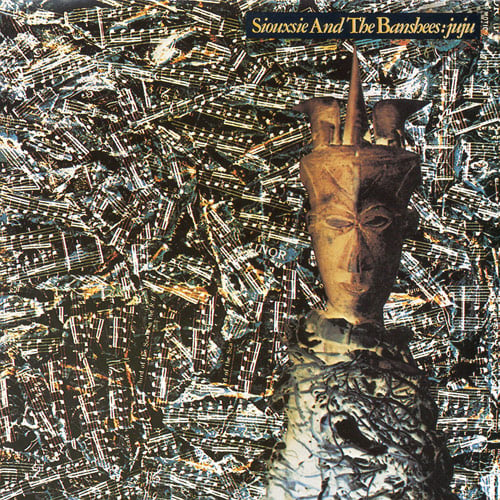

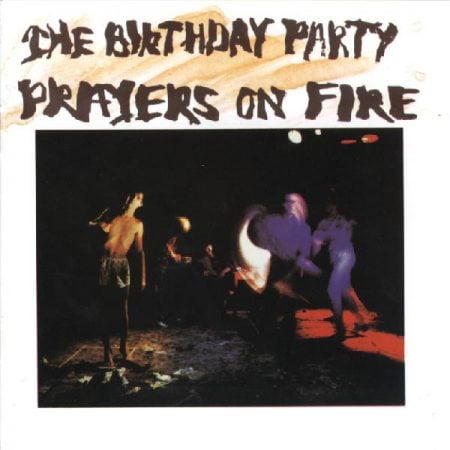
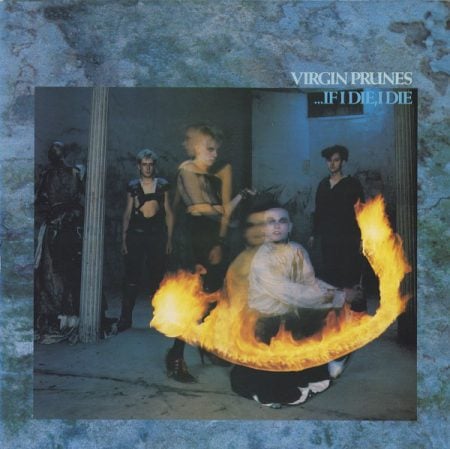
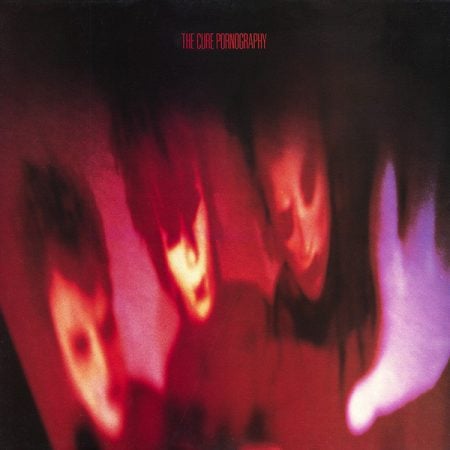


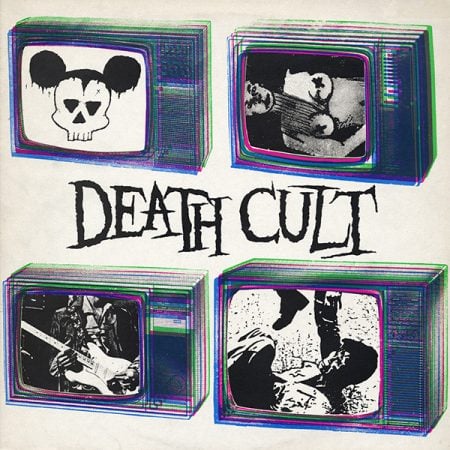




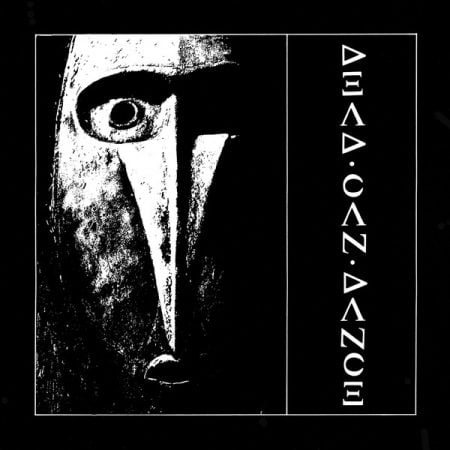
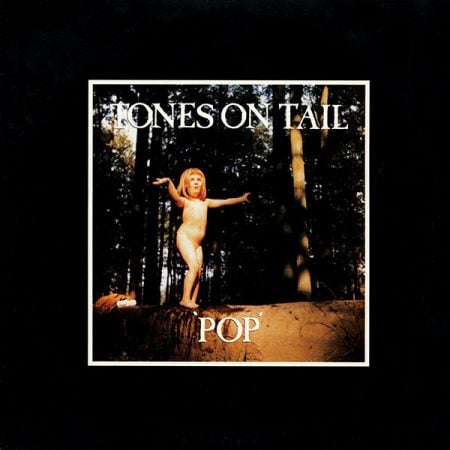
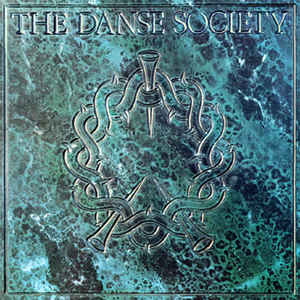
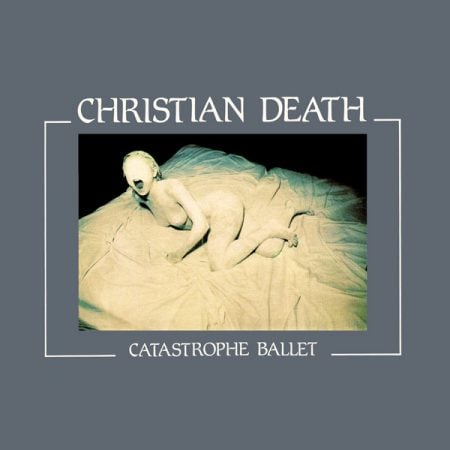

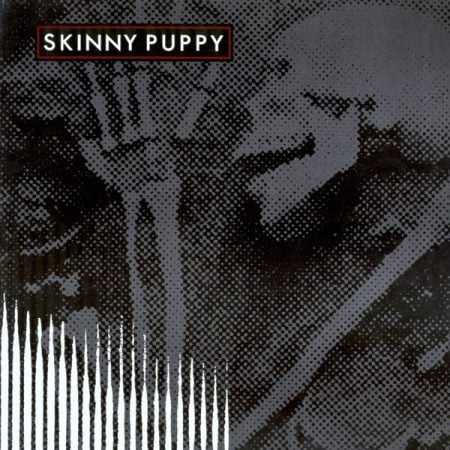


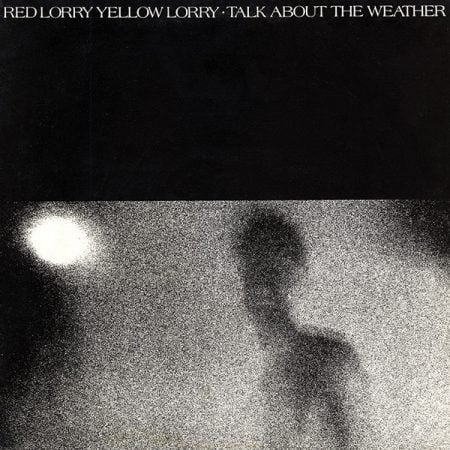

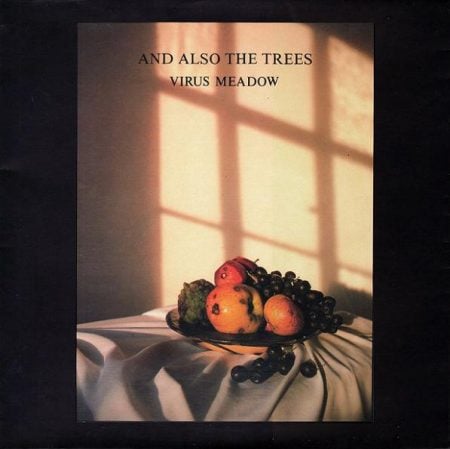
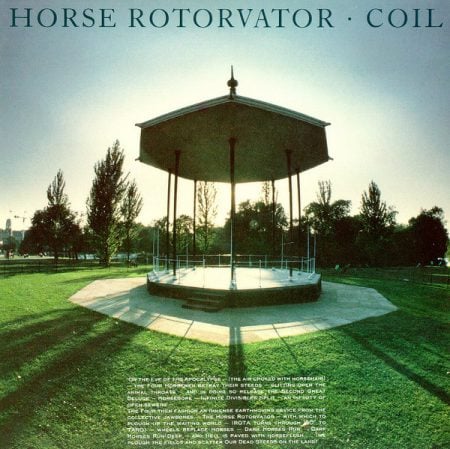
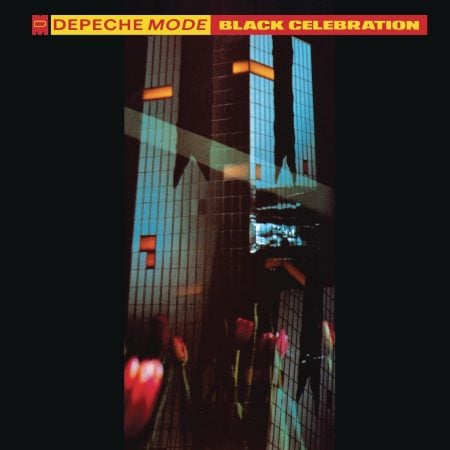



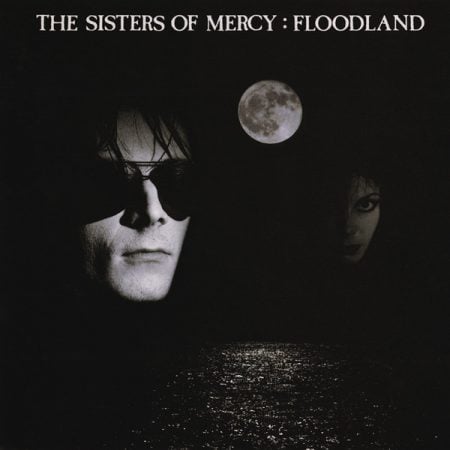
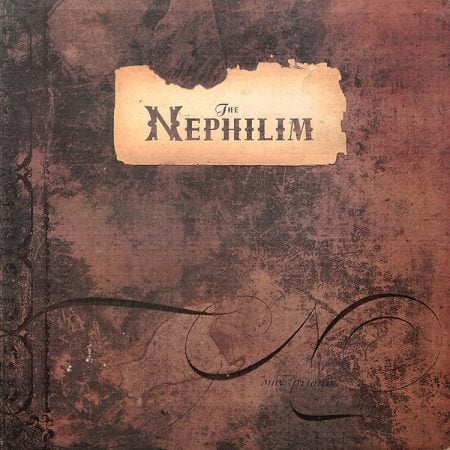
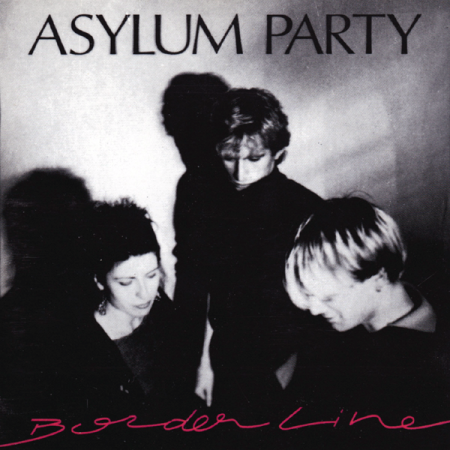


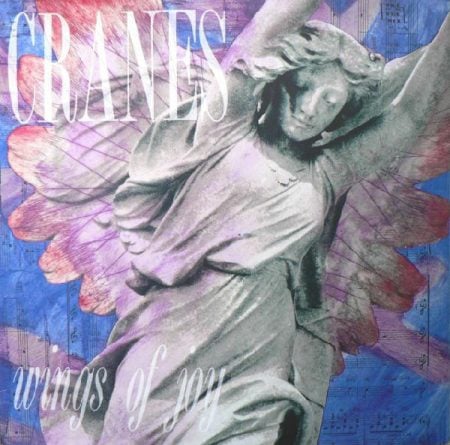



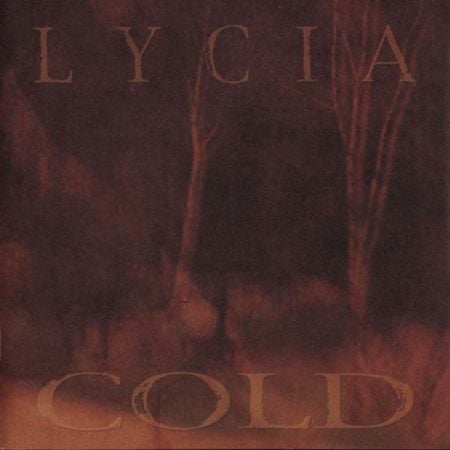


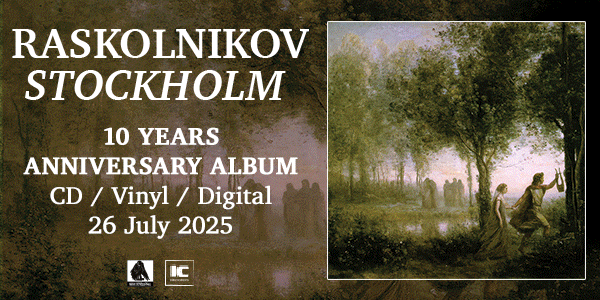




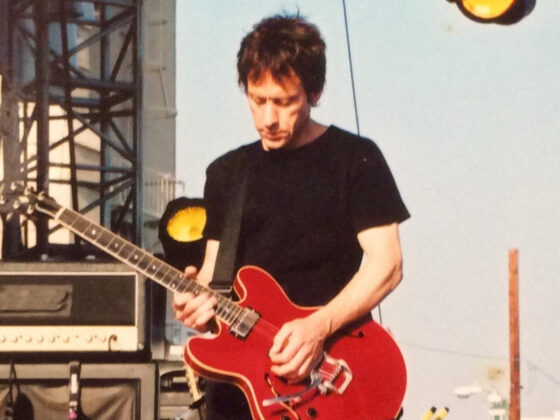




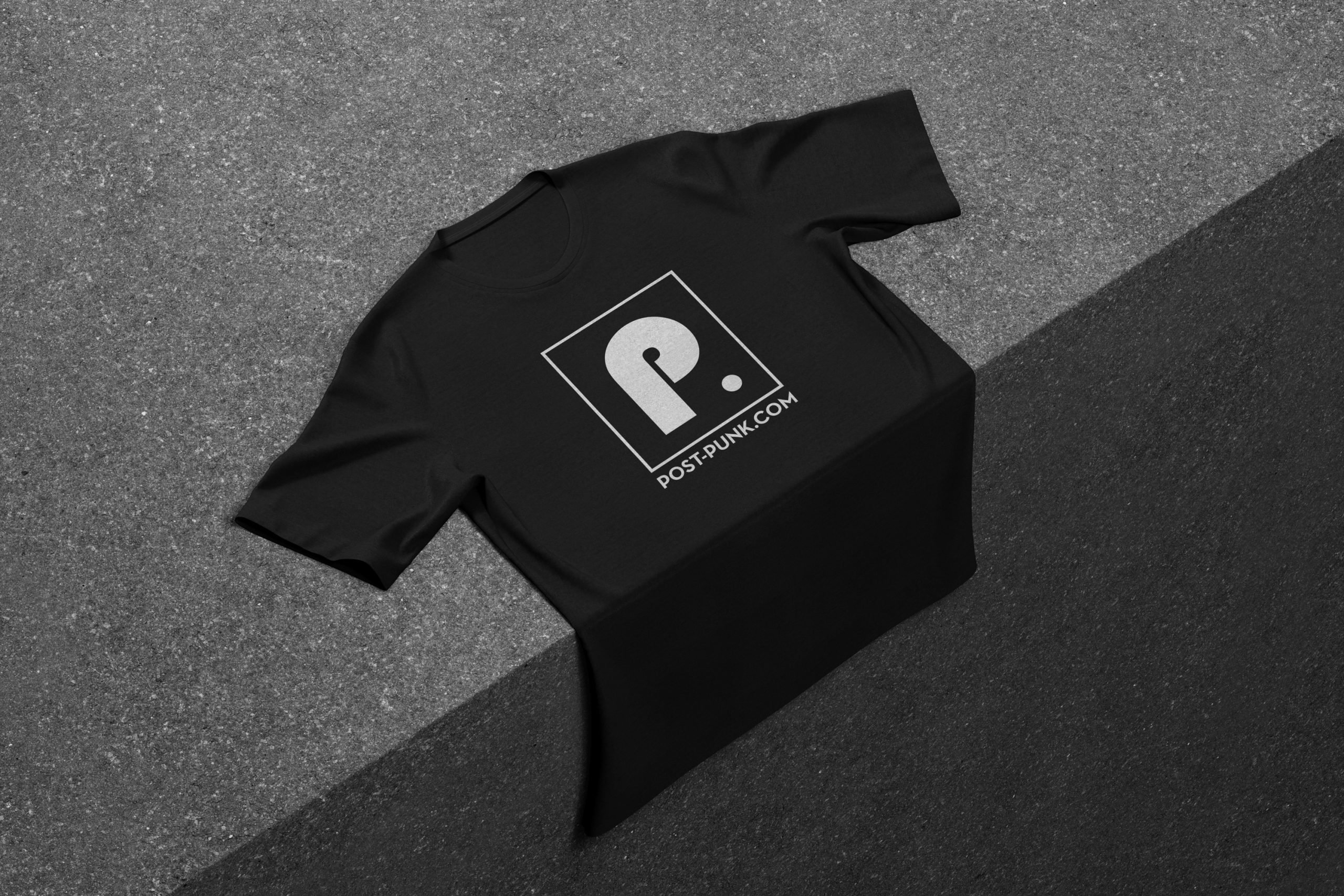 Or via:
Or via: